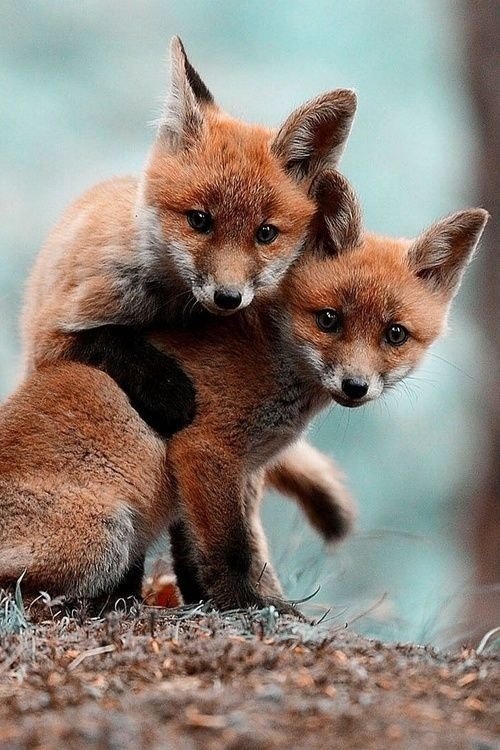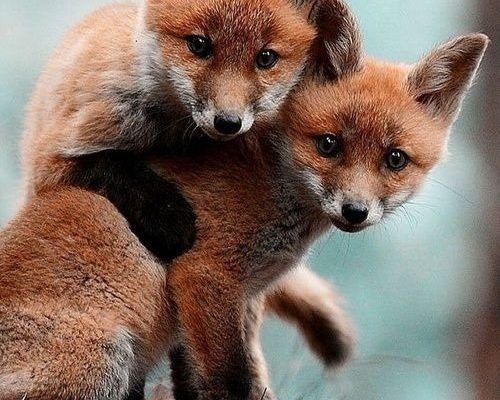
Let’s dive into the world of red fox parenting. Imagine a cozy den hidden in the underbrush, where the soft sounds of kits playing and learning fill the air. You might be surprised at how much effort goes into raising these little foxes and how the parents work together to ensure their survival. So, grab your favorite drink, and let’s explore how red foxes raise their young in the wild.
Understanding Red Fox Family Dynamics
Red foxes are known for their strong family bonds. A typical family unit consists of a *breeding pair*—the male and female fox—and their offspring, called kits. These family dynamics are quite interesting. The breeding pair usually mate for life, which is a bit rare in the animal kingdom. They work as a team to protect their territory, find food, and, most importantly, raise their young.
Once the female, or *vixen*, is pregnant—typically in the spring—she prepares for her new role as a mother. The vixen usually gives birth to a litter of 4 to 6 kits after a gestation period of about 53 days. This is no small task! Raising kits requires a harmonious balance of teamwork and resourcefulness, especially since kits are vulnerable in their early days.
You might be wondering about the role of the male, or *dog fox*. He takes on the responsibility of providing food for the family. This means hunting for a variety of prey, which can include rodents, rabbits, and even birds. The male fox’s dedication ensures that the whole family stays well-fed, allowing the vixen to focus on nursing the kits and keeping them safe.
The Importance of the Den
A red fox’s den is much more than just a cozy home; it’s a fortress for the young kits. Dens are typically dug into the ground and often have multiple entrances. This design provides excellent protection against predators and harsh weather. The vixen is meticulous when selecting a den site, favoring areas that are secluded and away from human disturbances.
Inside, the den is warm and dry, creating a safe space for the kits to grow. At first, the kits are born blind and completely dependent on their mother for warmth and nutrition. As they grow, the den becomes a playground. Kits begin to explore their surroundings, practicing their pouncing skills and learning how to navigate their little world.
Interestingly, the den also serves as a social hub for the family. As the kits get older, they start to interact with each other, developing their social skills. This interaction is crucial, as it lays the groundwork for their future behavior in the wild. You could say it’s a bit like a family bonding retreat, where lifelong lessons in survival and cooperation are learned.
Feeding the Kits: A Parent’s Job
Feeding the kits is one of the most critical parts of raising them. The vixen primarily nurses the young for about 8 to 12 weeks. During this time, she needs to maintain a high-calorie diet. As kits grow, their diet starts to diversify. The male fox brings back small prey, which the vixen then begins to introduce to her hungry little ones.
And here’s a fun fact: kits begin to venture out of the den around four weeks old. This is when they start to nibble on small amounts of solid food, such as meat or even fruits. Watching these little guys take their first bites is quite a sight—a bit like watching toddlers trying out new foods for the first time!
In addition to hunting, both parents work hard to teach their kits how to find food. They’ll bring the kits along on hunting excursions, showing them how to stalk and pounce. It’s all about building confidence and skills to ensure the kits can fend for themselves once they leave the den.
Teaching Survival Skills
As the kits grow, they enter a world of exploration and learning. Their parents play a vital role in teaching them essential survival skills. This includes how to hunt, avoid predators, and navigate their territory. Red foxes are naturally curious, and this curiosity drives the kits to explore their environment, climb trees, and even interact with other animals.
The parents engage in playful activities with the kits, which might look like roughhousing but serves a purpose. Play is crucial for developing their coordination and social skills. Just imagine a group of rambunctious toddlers running around, learning to share and cooperate. That’s what it’s like for these young foxes as they learn the ropes.
You might be surprised to learn that these lessons can take a few months. Kits typically stay with their parents until the fall, and by then, they’re ready to venture out on their own. The groundwork laid by the parents helps ensure these young foxes are well-equipped to survive once they leave the family unit.
Facing Challenges in the Wild
Raising kits isn’t all fun and games; there are plenty of challenges. Predators are always lurking, and the vixen must be vigilant in protecting her young. Common threats include larger mammals like coyotes and even domestic dogs. This is why the den’s location is critical, as it helps provide a safe haven.
Resources can also be scarce, especially during harsh weather conditions. The male fox must be resourceful and strategic in his hunting efforts. If food is hard to come by, the family could face tough times. This reality highlights the importance of teamwork between the breeding pair—when one parent is struggling, the other steps up.
Additionally, human encroachment on their habitat poses a significant threat. Urban development and agriculture can wipe out their natural surroundings and food sources. Red foxes are incredibly adaptable, but they still face challenges that can impact their ability to raise their young.
Growing Up and Leaving the Nest
By the time autumn rolls around, the kits are nearly fully grown and ready to take on the world. At this stage, they’re adept at hunting and have built the necessary skills to survive. As they prepare to leave their parents, you can almost sense their excitement and nervous anticipation.
Interestingly, young red foxes often leave their family group to establish their own territories. This is a natural part of their growth and ensures that they don’t compete directly with their parents for resources. Think of it like sending your child off to college—the goal is to set them up for success.
While it’s bittersweet to see the young ones go, it’s a vital part of the life cycle for red foxes. With their parents’ teachings, the kits are well-prepared to face the adventures and challenges that life will throw their way.
The Lifelong Impact of Fox Parenting
The way red foxes raise their young has significant implications for the species’ survival. Good parental care typically leads to healthier, more resourceful adults. These young foxes grow into skilled hunters and effective territorial defenders. This, in turn, helps maintain the population and ecosystem balance.
Foxes are incredibly adaptable creatures. The lessons learned from their parents aid in their ability to thrive in various environments, from forests to urban areas. So, when you think about the cycle of life for red foxes, you can see it’s much more than just survival; it’s about creating a legacy.
In the end, red foxes are a testament to the power of family and the lessons passed down through generations. Their unique parenting style showcases how teamwork and nurturing can help ensure the next generation thrives.
So next time you spot a red fox, take a moment to appreciate the incredible journey they undergo to raise their young in the wild. It’s a story of resilience, love, and learning that continues to unfold in nature’s beautiful tapestry.

